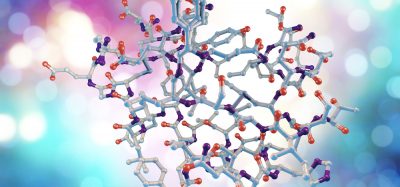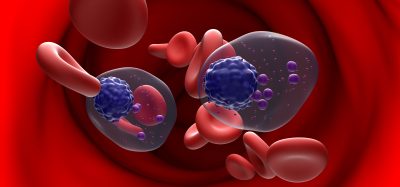Theranostic system can eliminate colorectal cancer
Posted: 3 November 2017 | Dr Zara Kassam (Drug Target Review) | No comments yet
Three-step pretargeted radioimmunotherapy offers safe and effective treatment for colorectal cancer…


Researchers have developed a new, three-step system that uses nuclear medicine to target and eliminate colorectal cancer. In this study with a mouse model, researchers achieved a 100-percent cure rate–without any treatment-related toxic effects.
Until now, radioimmunotherapy (targeted therapy) of solid tumours using antibody-targeted radionuclides has had limited therapeutic success. “This research is novel because of the benchmarks reached by the treatment regimen, in terms of curative tumour doses, with non-toxic secondary radiation to the body’s normal tissues,” explains Dr Steven M. Larson, and Dr Sarah Cheal, of Memorial Sloan Kettering Cancer Center. “The success in murine tumour models comes from the unique quality of the reagents developed by our group, and the reduction to practice methodology, including a theranostic approach that can be readily transferred, we believe, to patients.”
Theranostics, a term derived from therapy and diagnostics, is the use of a single agent to both diagnose and treat disease. The theranostic agent first finds the cancer cells, then destroys them, leaving healthy cells unharmed–minimising side effects and improving quality of life for patients.
In this study, the glycoprotein A33 (GPA33), an antigen found on over 95 percent of primary and metastatic human colorectal cancers, was targeted with a bispecific antibody for A33 tumor antigen and a second antibody for a small-molecule radioactive hapten, a complex of lutetium-177 (177Lu) and S-2-(4-aminobenzyl)1,4,7,10-tetraazacyclododecane tetra-acetic acid (177Lu-DOTA-Bn).
The DOTA-pretargeted radioimmunotherapy (PRIT) strategy was tested on a mouse model. In randomly selected mice undergoing treatment, serial SPECT/CT imaging was used to monitor treatment response and calculate radiation-absorbed doses to tumours. All the DOTA-PRIT-treated animals tolerated the treatment well, and all 9 assessed mice had no trace of cancer remaining upon microscopic examination. There was also no detectable radiation damage to critical organs, including bone marrow and kidneys.
The 100-percent cure rate in the mouse model is a promising preliminary finding that suggests that anti-GPA33-DOTA-PRIT will be a potent radioimmunotherapy regimen for GPA33-positive colorectal cancer tumours in humans.
According to the Centers for Disease Control and Prevention, colorectal cancer is the third most common cancer affecting both men and women. Each year, approximately 140,000 new cases are diagnosed in the United States and 50,000 people die of the disease.
The applications of this nuclear medicine treatment protocol could extend to other cancers as well. Dr Larson and Dr Cheal state, “If clinically successful, our approach will expand the repertoire of effective treatments for oncologic patients. The system is designed as a ‘plug and play’ system, which allows for the use of many fine antibodies targeting human tumour antigens and is applicable, in principle, to virtually all solid and liquid tumours in man.” They add, “There is a huge unmet need in oncology, especially for the solid tumours, for curative treatments for advanced disease. This includes colon, breast, pancreas, melanoma, lung, and esophageal, to name a few.”
The study is reported in The Journal of Nuclear Medicine.
Related topics
Oncology, Therapeutics
Related organisations
Centers for Disease Control and Prevention, Massachusetts Institute of Technology, Memorial Sloan Kettering Cancer Center
Related people
Dr Sarah Cheal, Dr Steven M. Larson







